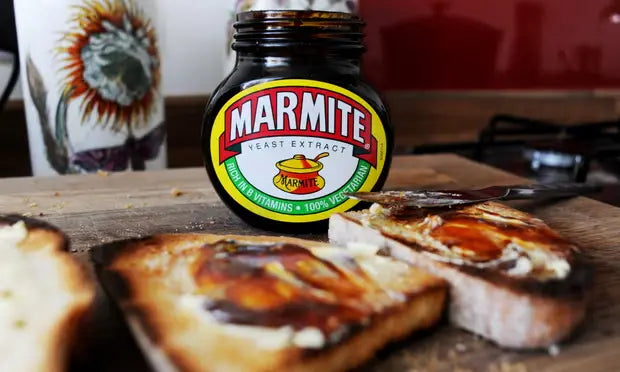
The History of Marmite: Love It or Hate It
Ask any Brit about Marmite, and you’ll likely get a strong reaction, either a grin or a grimace. This small, black jar has divided families for generations and inspired the famous slogan: “Love it or hate it.” But what actually is Marmite, and why does it spark such passionate opinions? Whether you’re a long-time lover, a first-time trier, or just a curious Filipino, here’s the story of Britain’s most controversial breakfast spread.
What is Marmite?
Marmite is a thick, dark brown spread made from yeast extract—the same stuff left over after brewing beer. It has a powerful, salty, savoury flavour, often described as “umami.” For many Brits, Marmite is a breakfast classic, usually spread thinly on hot buttered toast, but it’s also found its way into sandwiches, stews, and even instant noodles. It’s famous for being one of the most divisive foods in the UK, and proudly owns the phrase “Love it or hate it” right on the label.
The Marmite Origin Story
Believe it or not, Marmite was discovered by accident in the late 1800s, when a German scientist found that leftover brewer’s yeast could be concentrated into a nutritious paste. The first jars of Marmite appeared in England in 1902. Early on, it was promoted as a rich source of B vitamins and even included in soldiers’ rations during both World Wars.
The name “Marmite” comes from a French word for a lidded cooking pot, which used to appear on every jar. Over the decades, Marmite became a staple in British cupboards, eaten for breakfast, lunch, or whenever a little savoury kick was needed.
What Does Marmite Taste Like?
If you’ve never tried it, Marmite is hard to describe! Imagine a taste that’s salty, savoury, slightly bitter, and packed with that meaty, brothy flavour called umami. It’s a bit like soy sauce, but much thicker and more intense. A little goes a long way. Brits will tell you: the trick is to spread it thin. Too much, and it’s overpowering; just enough, and it’s a perfect boost to your toast or snack.
Why Do Brits Love (or Hate) Marmite?
Marmite’s bold taste means there’s not much middle ground, you’re either a fan or you’re not. For many, Marmite is pure nostalgia, reminding them of childhood breakfasts or school lunches. Others simply can’t handle the strong flavour and avoid it entirely. Over time, “Marmite” has become British slang for anything people have strong, split opinions about, “He’s a real Marmite character.”
The brand has fully embraced its reputation. Adverts encourage debate, and there’s even limited edition “Love” and “Hate” jars. If nothing else, Marmite always gets people talking.
How to Try Marmite (Especially for First-Timers)
If you’re curious, there are lots of ways to introduce Marmite to your Filipino kitchen. Start small!
Classic Toast:
Spread a little Marmite very thinly on buttered toast or crackers, never straight from the jar!
Add to Rice or Congee:
Stir a small amount into steaming rice or rice porridge for a savoury, umami boost.
Mix into Noodles or Soup:
Add a teaspoon to instant noodles, bulalo, or even tinola for deeper flavour.
In Cheese Sandwiches:
Try a Marmite and cheese toastie for a classic British combo.
Experiment:
Mix into marinades, pasta sauces, or even Filipino dishes like adobo, just a touch adds depth.
Don’t judge Marmite by the smell or the first taste, it’s an acquired taste for most, but you might find yourself reaching for the jar more often than you expect!
Could You Be a Marmite Convert?
Marmite isn’t for everyone, but it’s one of those flavours you have to try at least once. If you’re adventurous with food, pick up a jar and see which side you’re on, Team Love or Team Hate. Either way, you’ll have experienced a true British icon, and maybe even found a new secret ingredient for your kitchen.
